FORGING
DROP FORGING/CLOSED DIE FORGING
Drop Forging / Closed die forging is a manufacturing process in which a work piece is shaped by pressing it between two dies that are brought together with great force. The dies are typically made of hardened steel and are designed to impart a specific shape to the work piece. The process is called “closed die” forging because the dies are closed around the work piece, forming a confined space in which the forging takes place.
In closed die forging, the work piece is typically heated to a high temperature before it is placed between the dies. This helps to make the material more malleable, allowing it to be shaped more easily. The dies are then brought together with great force, typically using a press or hammer. The force and pressure applied to the work piece causes it to take on the shape of the dies.
Closed die forging is a common manufacturing process that is used to produce a wide variety of metal parts, including gears, shafts, automotive components as well as for the production of flanges and other piping components.. It is a useful process because it allows for the production of complex, high-strength parts that are not easily produced using other manufacturing methods.
Components manufactured using the drop forging process are stronger than their equivalent machined from solid or cast parts.


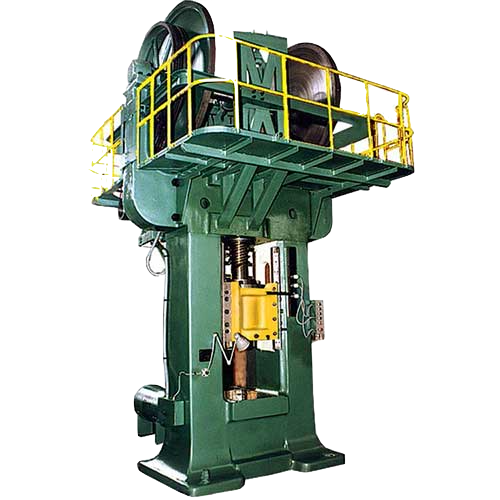
OPEN DIE FORGING
Open die forging is a forging process in which a piece of hot metal is shaped by pressing or pounding it between a series of flat or partially-shaped dies. Unlike closed die forging, which uses fully enclosed dies to shape the metal, open die forging allows the metal to be shaped in a more flexible and custom way.
Open die forging is typically used to produce large, complex parts that require a high degree of customization or that cannot be produced using other forging methods. It is often used to produce parts for the aerospace, defense, and heavy machinery industries, as well as for the production of custom flanges and other piping components.
In open die forging, the metal is heated until it is hot enough to be shaped by the dies. It is then placed between the dies and struck with a hammer or press to shape it. The dies are typically made from a high-strength tool steel and are carefully machined to produce the desired shape.
The goal is to shape the metal into the desired shape while maintaining its strength and integrity.
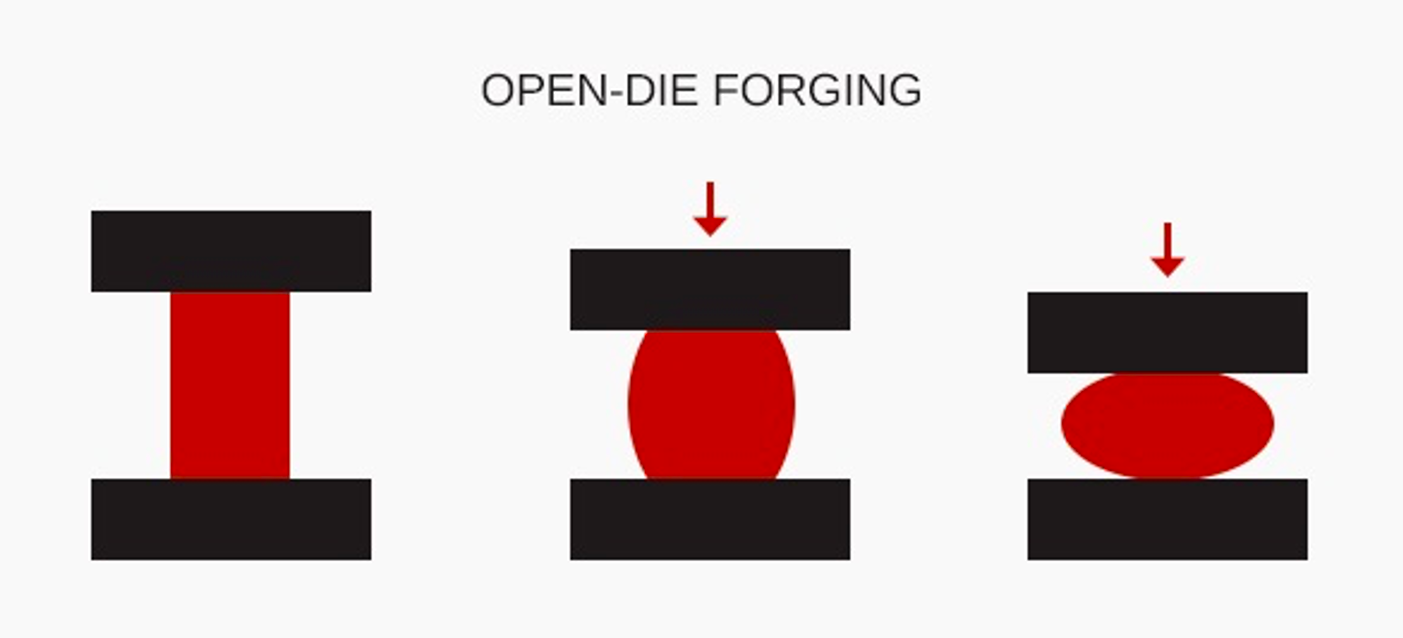
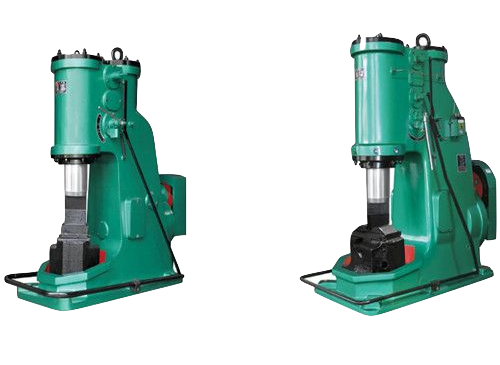
Machining
CNC Turning/CNC Lathe
CNC turning is a manufacturing process in which a computer numerical control (CNC) machine is used to produce cylindrical parts. The process involves using a lathe or turning machine, which is a machine tool that rotates a work piece on its axis while a cutting tool is used to remove material to create the desired shape.
In CNC turning, the cutting tool is mounted on a tool holder that is attached to a turret or tool post. The turret or tool post is mounted on a slide, which moves the tool in and out of the work piece as it rotates. The movement of the tool is controlled by a computer program, which allows for precise and consistent cuts to be made.
CNC turning is a highly efficient and accurate method of producing cylindrical parts. It allows for the production of complex shapes and geometries with a high degree of precision, and is widely used in a variety of industries, including aerospace, automotive, and medical device manufacturing.
There are several types of operations that can be performed on a CNC lathe, including:
Turning: This is the process of rotating the work piece and using a cutting tool to remove material from the surface to create a cylindrical shape.
Facing: This is the process of using a cutting tool to remove material from the end of the work piece to create a flat surface.
Chamfering: This is the process of using a cutting tool to create an angled edge on the work piece.
Threading: This is the process of using a cutting tool to create threads on the surface of the work piece.
Parting: This is the process of using a cutting tool to separate the work piece into two pieces by cutting all the way through it.
Drilling: This is the process of using a cutting tool to create a hole in the work piece.
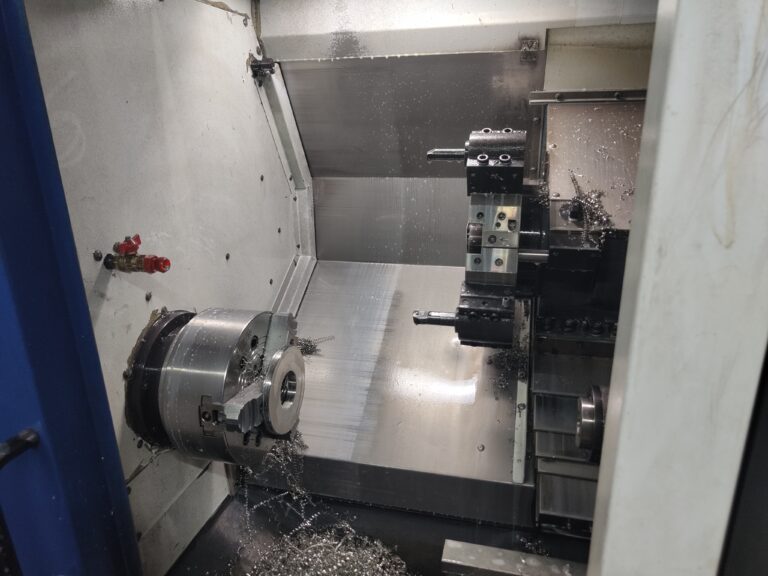

Infra Machining
CNC Turning Center
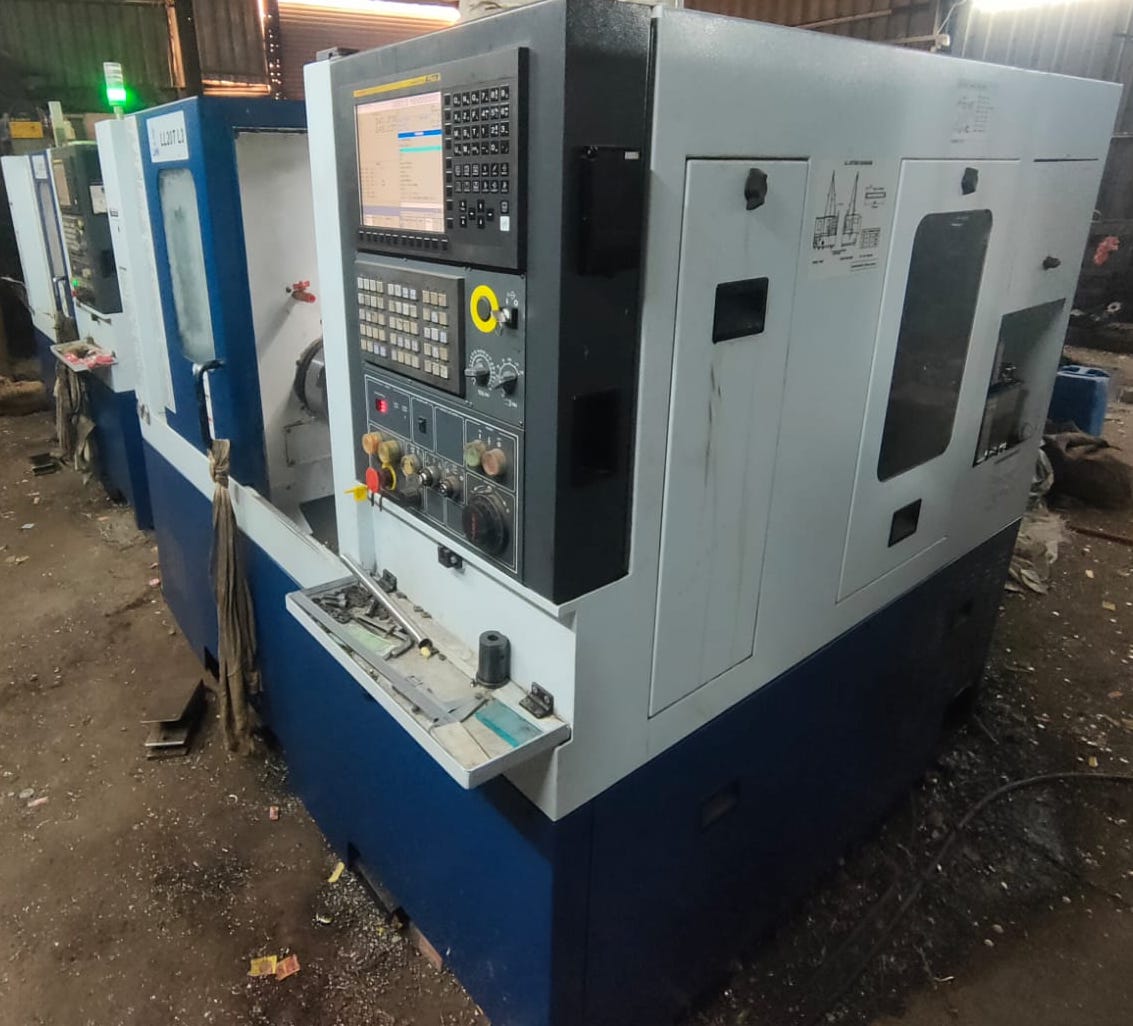
CNC Milling/Vertical machining Center (VMC)
A VMC, or vertical machining center, is a type of CNC (computer numerical control) milling machine that is commonly used in manufacturing. It is called a “vertical” machining center because the spindle that holds the cutting tool is oriented vertically, as opposed to the horizontal orientation of a CNC horizontal machining center.
A VMC typically consists of a bed or table that holds the work piece in place, and a spindle that rotates a cutting tool to remove material from the work piece. The spindle is mounted on a vertically oriented column, and the bed is mounted on a horizontal base. This configuration allows the cutting tool to move in three dimensions (X, Y, and Z) to create the desired shape of the work piece.
VMCs are widely used in a variety of industries, including aerospace, automotive, and medical, due to their versatility, precision, and efficiency. They are often used to create complex shapes and features on parts that require high levels of accuracy and repeatability.
It is capable of performing a wide range of machining operations, including:
Milling: This is the process of using a rotating cutting tool to remove material from the surface of a work piece to create a specific shape or feature.
Drilling: This is the process of using a cutting tool to create a hole in the work piece.
Reaming: This is the process of using a cutting tool to enlarge and smooth an existing hole in the work piece.
Tapping: This is the process of using a cutting tool to create threads on the inside of a hole in the work piece.
Boring: This is the process of using a cutting tool to enlarge an existing hole in the work piece.
Knurling: This is the process of creating a pattern of ridges on the surface of the work piece.
Parting: This is the process of using a cutting tool to separate the work piece into two pieces by cutting all the way through it.
Thread milling: This is the process of using a cutting tool to create threads on the surface of the work piece.

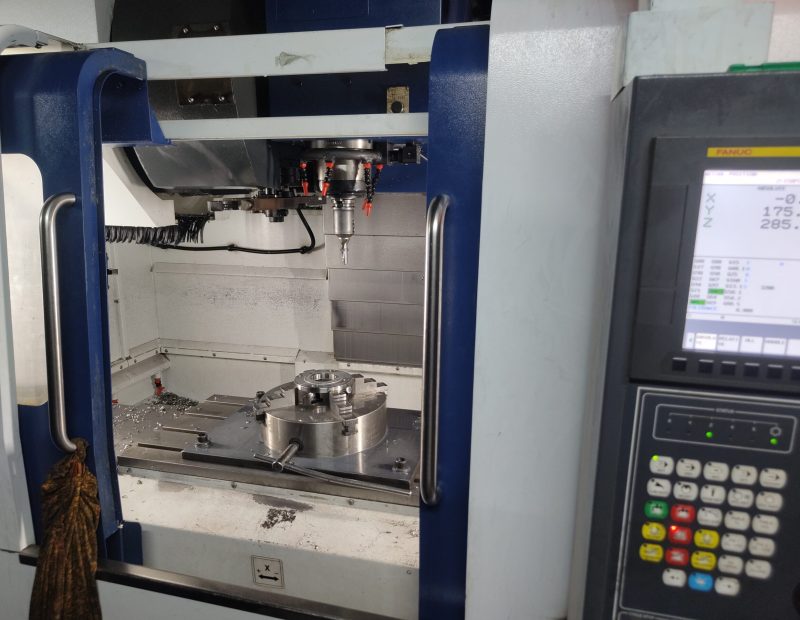
Infra Machining
VMC

Creative Solutions
We believe our customers should gain the full benefits of our advanced products.
Delivery On Time
We ensure timely delivery and airtight and safe delivery of our products. we value your business time.
Quality Products
Quality is one of the essential principles of our business.
Experience
Experience Sea Worthy packing Accurate Dimensions Quality Raw Material
